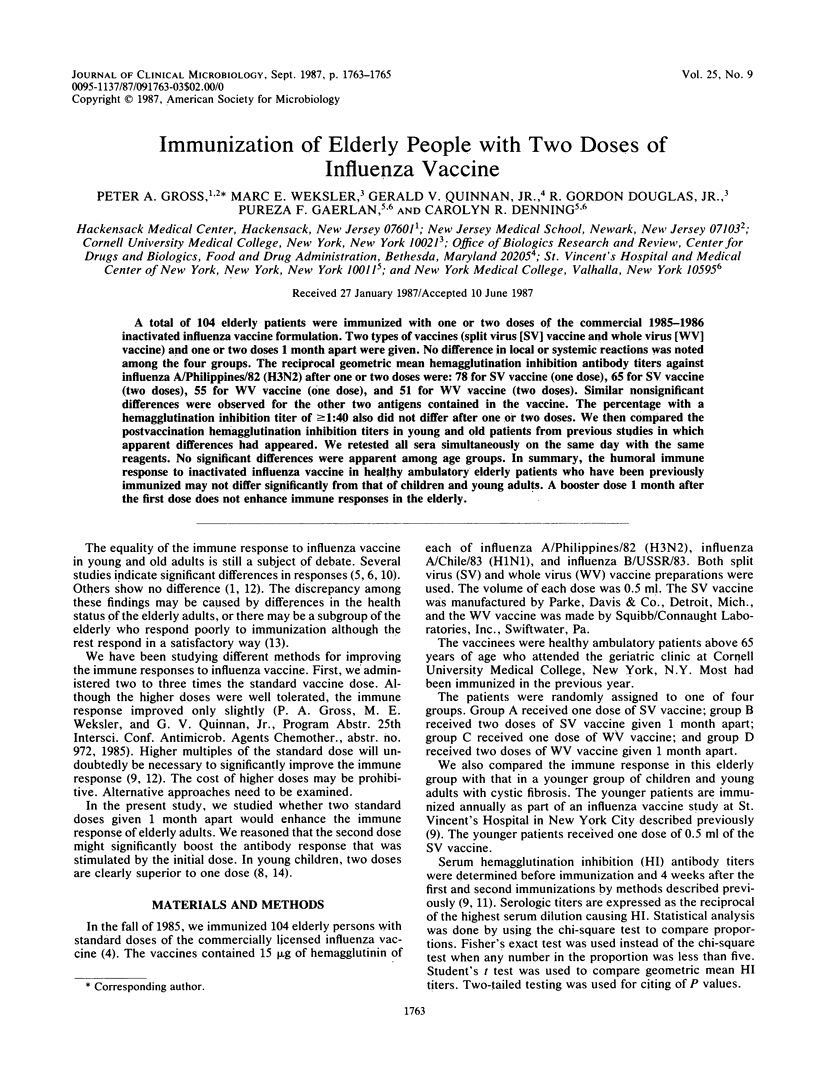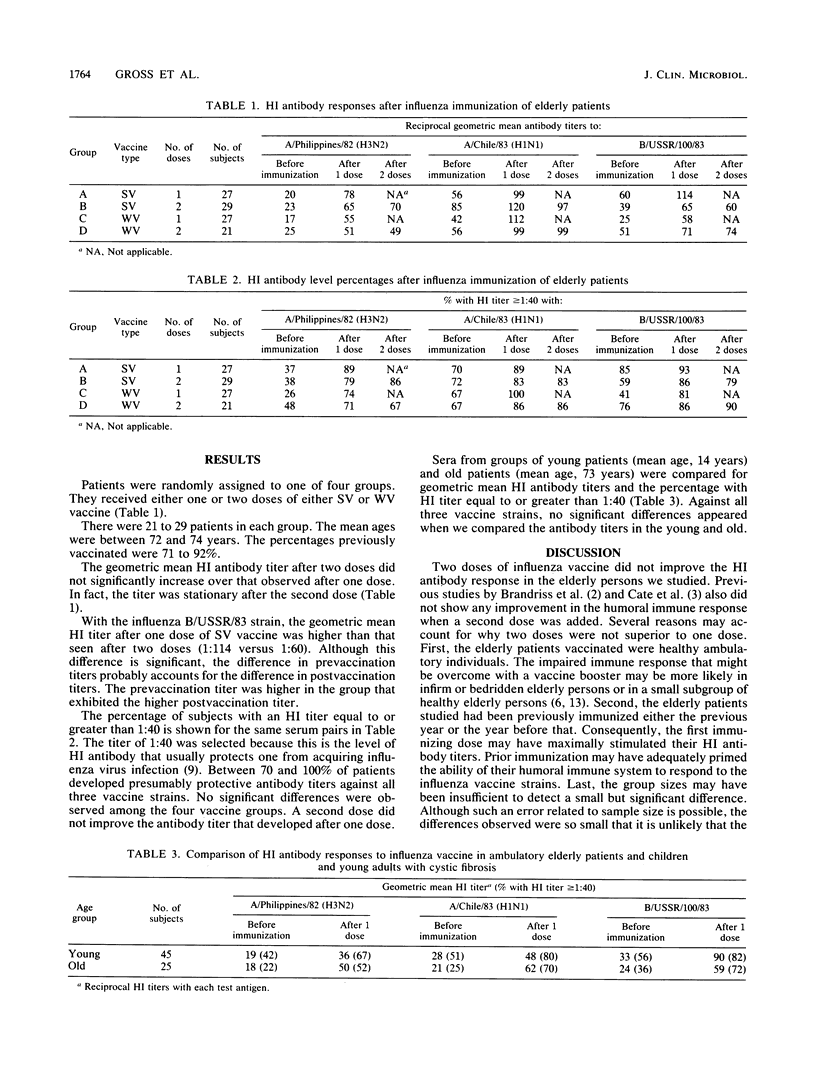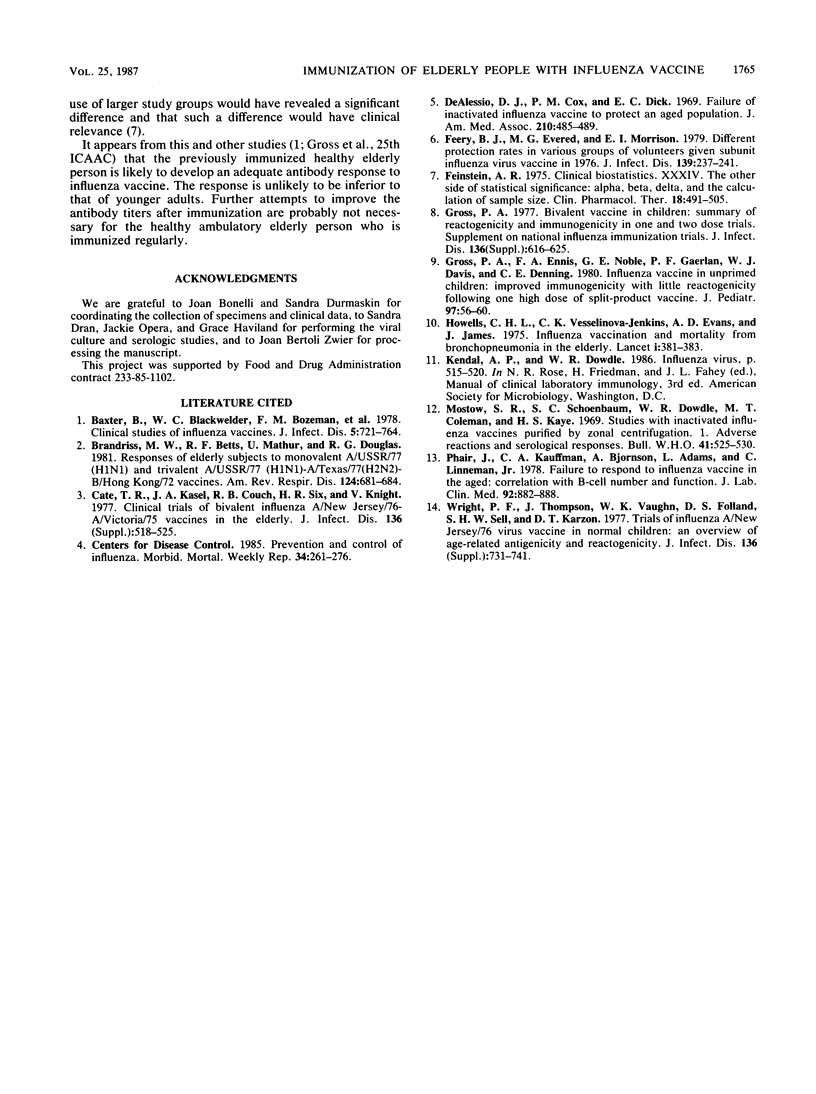Abstract
A total of 104 elderly patients were immunized with one or two doses of the commercial 1985-1986 inactivated influenza vaccine formulation. Two types of vaccines (split virus [SV] vaccine and whole virus [WV] vaccine) and one or two doses 1 month apart were given. No difference in local or systemic reactions was noted among the four groups. The reciprocal geometric mean hemagglutination inhibition antibody titers against influenza A/Philippines/82 (H3N2) after one or two doses were: 78 for SV vaccine (one dose), 65 for SV vaccine (two doses), 55 for WV vaccine (one dose), and 51 for WV vaccine (two doses). Similar nonsignificant differences were observed for the other two antigens contained in the vaccine. The percentage with a hemagglutination inhibition titer of greater than or equal to 1:40 also did not differ after one or two doses. We then compared the postvaccination hemagglutination inhibition titers in young and old patients from previous studies in which apparent differences had appeared. We retested all sera simultaneously on the same day with the same reagents. No significant differences were apparent among age groups. In summary, the humoral immune response to inactivated influenza vaccine in healthy ambulatory elderly patients who have been previously immunized may not differ significantly from that of children and young adults. A booster dose 1 month after the first dose does not enhance immune responses in the elderly.
Full text
PDF


Selected References
These references are in PubMed. This may not be the complete list of references from this article.
- Brandriss M. W., Betts R. F., Mathur U., Douglas R. G., Jr Responses of elderly subjects to monovalent A/USSR/77 (H1N1) and Trivalent A/USSR/77 (H1N1)-A/TEXAS/77 (H3N2)-B/Hong Kong/72 vaccines. Am Rev Respir Dis. 1981 Dec;124(6):681–684. doi: 10.1164/arrd.1981.124.6.681. [DOI] [PubMed] [Google Scholar]
- D'Alessio D. J., Cox P. M., Jr, Dick E. C. Failure of inactivated influenza vaccine to protect an aged population. JAMA. 1969 Oct 20;210(3):485–489. [PubMed] [Google Scholar]
- Feery B. J., Evered M. G., Morrison E. I. Different protection rates in various groups of volunteers given subunit influenza virus vaccine in 1976. J Infect Dis. 1979 Feb;139(2):237–241. doi: 10.1093/infdis/139.2.237. [DOI] [PubMed] [Google Scholar]
- Feinstein A. R. Clinical biostatistics. XXXIV. The other side of 'statistical significance': alpha, beta, delta, and the calculation of sample size. Clin Pharmacol Ther. 1975 Oct;18(4):491–505. doi: 10.1002/cpt1975184491. [DOI] [PubMed] [Google Scholar]
- Gross P. A., Ennis F. A., Noble G. R., Gaerlan P. F., Davis W. J., Denning C. E. Influenza vaccine in unprimed children: improved immunogenicity with few reactions following one high dose of split-product vaccine. J Pediatr. 1980 Jul;97(1):56–60. doi: 10.1016/s0022-3476(80)80130-2. [DOI] [PubMed] [Google Scholar]
- Howells C. H., Vesselinova-Jenkins C. K., Evans A. D., James J. Influenza vaccination and mortality from bronchopneumonia in the elderly. Lancet. 1975 Feb 15;1(7903):381–383. doi: 10.1016/s0140-6736(75)91291-x. [DOI] [PubMed] [Google Scholar]
- Mostow S. R., Schoenbaum S. C., Dowdle W. R., Coleman M. T., Kaye H. S. Studies with inactivated influenza vaccines purified by zonal centrifugation. 1. Adverse reactions and serological responses. Bull World Health Organ. 1969;41(3):525–530. [PMC free article] [PubMed] [Google Scholar]


